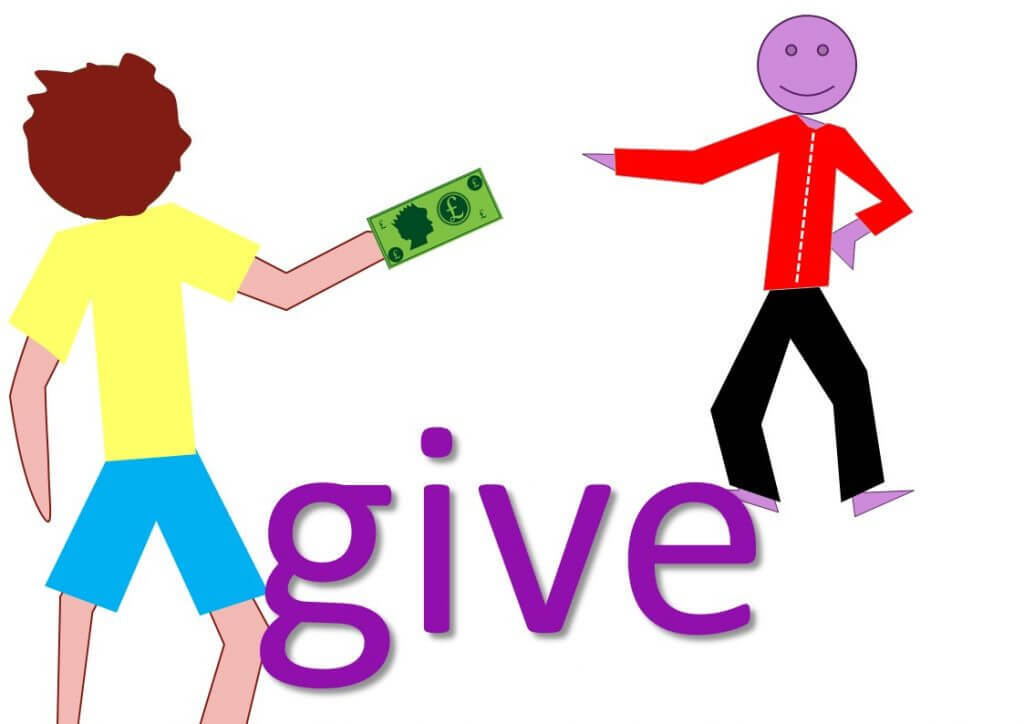Delivering a compelling presentation in a non-native language can be a daunting task, but with careful planning and practice, it’s achievable. This guide offers a structured approach, covering everything from initial preparation to handling questions and feedback. By understanding the nuances of language and cultural sensitivities, you can confidently connect with your audience and make a lasting impact.
The guide meticulously details the key steps, from crafting an Artikel that caters to non-native speakers to incorporating engaging visual aids. We explore the importance of selecting appropriate vocabulary, practicing delivery, and managing nerves. This comprehensive resource equips you with the knowledge and strategies to excel in any presentation setting.
Planning and Preparation

Effective presentation delivery in a non-native language hinges on meticulous planning and preparation. This phase ensures clarity, confidence, and a positive impact on the audience. Careful consideration of the language barrier, cultural nuances, and the specific presentation context is paramount.A well-structured presentation, regardless of the language, fosters understanding and engagement. This section will provide a practical roadmap for outlining, structuring, researching, tailoring, and culturally-sensitive presentation preparation.
Outlining a Presentation
A systematic approach to outlining is crucial for any presentation, especially when using a non-native language. This approach ensures a logical flow and maintains clarity for both the presenter and the audience. Begin by defining the presentation’s objective and target audience. From there, create a detailed framework that includes an introduction, main points, and a conclusion. Each point should be supported by specific examples and evidence.
Using visuals and transitions between points enhances engagement and reinforces understanding.
Structuring Presentation Content
Adapting presentation content for non-native speakers necessitates a structured approach. This framework promotes clarity and comprehension, reducing potential misunderstandings. Use short, concise sentences and avoid complex grammatical structures. Emphasize key terms and concepts, using clear definitions and examples. Incorporate visual aids, such as charts, graphs, or images, to illustrate key points.
Ensure that the visuals are easily understandable and support the verbal content, not merely repeat it.
Researching and Selecting Information
Thorough research is essential for creating a compelling presentation. Begin by identifying reliable sources of information, such as academic journals, reputable websites, and credible books. Prioritize sources that offer clear and concise explanations of the topic. When selecting information, consider its relevance to the presentation’s objective and target audience. Assess the information’s complexity and adjust it to the linguistic proficiency of the audience.
Tailoring Style and Tone
Tailoring the presentation’s style and tone to the audience is vital for effective communication. Consider the audience’s background, knowledge level, and expectations. Adapt the language to their comprehension level, using simpler vocabulary and sentence structures when appropriate. Maintain a professional and respectful tone throughout the presentation.
Cultural Sensitivities
Understanding cultural sensitivities is paramount when presenting to an international audience. Be mindful of potential cultural differences in communication styles, body language, and non-verbal cues. Research the cultural norms of the audience to avoid unintentional offense.
- Respectful Language: Use respectful and inclusive language, avoiding jargon, slang, or colloquialisms that may be unfamiliar or offensive to the audience.
- Nonverbal Communication: Be mindful of nonverbal cues, such as gestures, eye contact, and posture, as these can vary significantly across cultures.
- Humor and Cultural Context: Humor can be a powerful tool in presentations, but it’s crucial to ensure it’s culturally appropriate. Avoid jokes that rely on cultural references or stereotypes that might offend the audience.
- Time Perception: Different cultures have varying perceptions of time. Be aware of these differences and adjust your presentation accordingly.
- Dress Code: Research the appropriate dress code for the presentation venue and audience to ensure you are appropriately dressed.
Language Considerations

Delivering a presentation in a non-native language requires careful attention to language nuances and cultural context. Understanding your audience and tailoring your presentation accordingly is crucial for effective communication and a positive impact. This section will explore key strategies for choosing appropriate language, addressing potential barriers, and ensuring a natural and engaging delivery.A well-structured presentation, adapted to the target audience’s language proficiency, is paramount.
This entails considering vocabulary, grammar, and cultural sensitivities. Successful presentations hinge on clear and concise communication, coupled with awareness of potential language challenges and proactive strategies for addressing them.
Choosing the Appropriate Vocabulary and Grammar Level
Understanding the target audience’s language proficiency is essential. A presentation tailored to a beginner audience will differ significantly from one intended for advanced learners. Careful consideration of vocabulary and sentence structure is critical. For example, using complex terminology with an audience unfamiliar with it can lead to misunderstandings and loss of engagement. Employing clear, simple language, with supporting visuals, will greatly enhance comprehension.
Identifying and Addressing Potential Language Barriers
Potential language barriers can include unfamiliar vocabulary, complex sentence structures, and pronunciation difficulties. A speaker should anticipate and proactively address these potential roadblocks. Preparing for and anticipating such challenges can significantly improve the presentation’s overall effectiveness. This involves careful preparation and potentially incorporating visual aids, simple explanations, or even repetition of key concepts. If a word or phrase is particularly challenging to pronounce, consider using a simpler synonym or providing a visual representation.
Also, using a translator or interpreter, especially for a complex or sensitive topic, can alleviate concerns.
Importance of Clear and Concise Language
Using clear and concise language is crucial for effective communication. Avoid jargon, ambiguous phrases, or overly complex sentences. This principle is fundamental to ensuring the message is easily understood. Concise language facilitates the audience’s ability to grasp the key points of the presentation and enhances engagement.
Examples of Simple Yet Effective Phrases
Using simple, yet effective phrases is crucial for clear communication. Here are a few examples:
- “To summarize…”
- “Let’s move on to…”
- “This is an important point…”
- “I’d like to highlight…”
- “In conclusion…”
These phrases can significantly improve the presentation’s clarity and flow.
Idioms and Colloquialisms
Idioms and colloquialisms can add color and personality to a presentation, but they can also create misunderstandings. Presentations in a non-native language should generally avoid them. Differences in cultural context can lead to misinterpretations or even offense. Understanding the cultural nuances of the target audience is paramount to ensuring the presentation is received positively. For example, an idiom that is common in one culture might be entirely unfamiliar or even offensive in another.
Practice and Rehearsal for Pronunciation and Pacing
Rehearsing the presentation is vital, especially for pronunciation and pacing. Practicing aloud allows the speaker to identify areas needing improvement in pronunciation and pacing. Pay attention to the natural flow of speech and avoid unnatural pauses or hesitations. Practicing with a language partner or tutor can be invaluable. Rehearsing with a native speaker can help to refine pronunciation, tone, and delivery style.
By rehearsing extensively, the speaker can develop a natural rhythm and flow, reducing the likelihood of pauses or hesitations.
Ensuring Natural-Sounding Speech
Natural-sounding speech is essential for audience engagement. Over-emphasis or unnatural pauses can distract from the message. Focus on a conversational tone and avoid excessive formality. Natural pauses, pauses that occur naturally in speech, are often essential to maintain audience engagement. Excessive pauses, however, can create confusion and undermine the presentation’s impact.
Practice fluent speech through repetition and practice to establish a natural flow.
Delivery Techniques
Delivering a presentation in a non-native language requires careful preparation and practice. Confidence and effective communication strategies are crucial for conveying your message clearly and engaging your audience. This section details methods for practicing, managing nerves, engaging the audience, handling questions, using visual aids, and finding resources to enhance your presentation skills.Effective delivery goes beyond simply knowing the content.
It involves projecting confidence, maintaining eye contact, and adapting to the audience’s feedback. Practicing these skills in a non-native language requires deliberate effort and a focused approach.
Practicing and Rehearsing the Presentation
Thorough practice is essential for building confidence and fluency when presenting in a non-native language. Rehearsing allows you to identify areas needing improvement and refine your delivery. Record yourself practicing to gain objective feedback on your pace, tone, and body language. Consider practicing in front of a mirror or a small group of supportive listeners. This provides valuable feedback and helps to address potential issues in a safe environment.
Breaking down the presentation into smaller segments for practice will help you to master each part effectively.
Managing Nerves and Anxiety
Nerves and anxiety are common experiences during presentations, regardless of language proficiency. Techniques such as deep breathing exercises, visualization, and positive self-talk can help mitigate these feelings. Visualizing a successful presentation beforehand can build confidence and reduce anxiety. Remember that a little nervousness is often a sign of your commitment to the task.
Maintaining Eye Contact and Engaging the Audience
Eye contact is a powerful tool for connecting with your audience. Scanning the room and making eye contact with different individuals helps to create a sense of connection and engagement. Varying your tone of voice and using gestures naturally can also enhance audience engagement. Avoid looking at just one person or a single spot for an extended period.
Handling Questions and Feedback
Prepare for questions by anticipating potential queries related to your presentation topic. Actively listen to questions and provide thoughtful responses. If you don’t know the answer, acknowledge it honestly and offer to follow up later. Feedback from the audience can be invaluable for improvement. Thank the audience for their feedback and consider implementing suggestions where appropriate.
Take notes on the feedback to improve future presentations.
Incorporating Visual Aids
Visual aids can significantly enhance a presentation, especially when presenting in a non-native language. Use clear, concise visuals that complement your message rather than replace it. Avoid overly complex or cluttered slides. Focus on key information and visuals that support your points. Use visuals that are easy to understand, regardless of language barriers.
Using Visual Aids Effectively
Visual aids should clarify, not overcomplicate, your presentation. They should reinforce your points, not distract from them. Avoid relying on direct translations on slides. Instead, use visuals that are universally understood, such as charts, graphs, images, or diagrams. Supplement these with concise annotations in your native language if necessary, but prioritize visuals that don’t require translation.
Ensure that the visual aids are easily readable from a distance.
Resources for Practicing Presentation Skills
- Online presentation tools and platforms, such as PowerPoint, Google Slides, and Prezi, offer templates and resources for creating and delivering presentations.
- Public speaking workshops and courses provide structured learning experiences and opportunities to practice in a supportive environment.
- Joining Toastmasters International clubs provides opportunities for regular practice and feedback from experienced speakers.
- Recording yourself presenting and reviewing the recording to identify areas for improvement is a helpful self-assessment tool.
- Seek feedback from trusted mentors or colleagues to gain constructive insights on your presentation skills.
Visual Aids and Multimedia

Effective visual aids are crucial for engaging audiences and enhancing understanding, particularly in presentations delivered in a non-native language. Clear, concise visuals can bridge communication gaps, reducing reliance on complex verbal explanations and fostering comprehension. Visual aids can help clarify abstract concepts, reinforce key messages, and create a more memorable presentation.
Comparing Different Visual Aid Types
Visual aids can significantly impact a presentation’s effectiveness. Different types offer various strengths. Understanding these strengths allows for a tailored approach to presentation design.
| Visual Aid Type | Strengths | Weaknesses |
|---|---|---|
| Slides (text-based) | Excellent for presenting concise information, bullet points, and key takeaways. Easy to create and edit. | Can be overwhelming if overly text-heavy. May lack visual appeal, potentially leading to audience disengagement. |
| Images | Powerful for conveying complex ideas visually, fostering better memory retention and emotional connection. | May require accompanying text for clarity, especially for diverse audiences. Overuse can make the presentation cluttered. |
| Videos | Captivating, allowing for demonstrations, explanations, and showing real-world examples. | Lengthy videos can be distracting. Choosing the right video clips is essential. May not be appropriate for all topics. |
| Charts and Graphs | Ideal for presenting data, trends, and comparisons in a clear and concise way. | Can be confusing if not clearly labeled. Overly complex charts can overwhelm the audience. |
Best Practices for Using Visuals
Crafting effective visuals for presentations delivered in a non-native language demands careful consideration. Understanding the nuances of diverse audiences is crucial.
- Prioritize clarity and conciseness. Use simple language and avoid jargon. Ensure visual elements are self-, reducing the need for extensive verbal explanations. Using high-quality images and graphics can help convey messages effectively.
- Employ high-quality visuals. Avoid blurry images, poor resolution graphics, or low-quality videos. This fosters a professional impression and enhances the presentation’s impact.
- Avoid visual distractions. Ensure visuals are not too busy or cluttered. Use a clean design with clear fonts and appropriate color schemes. Avoid animations that distract from the core message.
- Select culturally appropriate visuals. Be mindful of cultural norms and sensitivities. Avoid using images or symbols that may be offensive or inappropriate in different cultural contexts. Ensure visuals do not inadvertently perpetuate stereotypes.
- Incorporate multimedia elements strategically. Integrate short, relevant videos or animations to explain complex concepts or illustrate procedures. Choose videos that complement, not replace, the presentation’s core message.
Examples of Easily Understandable Visuals
Using visuals that resonate with a diverse audience enhances comprehension. Consider these examples:
- Infographics: These present information visually using charts, graphs, and images, making data easily digestible for a wide audience.
- Photographs: Photographs depicting real-world scenarios can help convey the presentation’s message effectively.
- Simple diagrams: Visual representations of processes or concepts using clear and straightforward shapes and labels.
Culturally Sensitive Visual Design
Cultural sensitivity is paramount in visual design. A presentation’s visual appeal should consider cultural nuances and avoid unintentional offense.
- Color symbolism: Colors hold different meanings in various cultures. Research the cultural significance of colors before using them in visuals.
- Imagery: Carefully select images that are culturally appropriate and avoid images that may be offensive or stereotypical.
- Font choices: Fonts convey a particular tone or style. Choosing fonts that align with the presentation’s overall message and cultural context is essential.
Q&A and Feedback
Handling questions and feedback effectively is crucial for a successful presentation, especially when delivered in a non-native language. A well-managed Q&A session demonstrates confidence and allows the audience to gain a deeper understanding of the topic. Positive audience engagement is further enhanced through constructive feedback. This section provides strategies to navigate these crucial aspects of the presentation.Addressing questions and feedback in a non-native language requires a combination of preparation, patience, and clear communication.
Understanding the nuances of the language and anticipating potential misunderstandings can significantly improve the overall experience for both the presenter and the audience.
Strategies for Handling Questions
Effective question handling involves more than simply answering; it involves actively listening, clarifying ambiguities, and ensuring everyone feels heard and understood. This requires a thoughtful approach, focusing on the audience’s needs.
- Active Listening and Clarification: Pay close attention to the question, focusing on the underlying meaning rather than just the words. If you don’t understand, politely ask for clarification. Rephrasing the question in your own words can confirm your comprehension. For example, “Could you please rephrase your question, focusing on…?” This demonstrates a proactive approach to comprehension.
- Politeness and Professionalism: Maintain a professional and polite demeanor. Even if the question is challenging, avoid becoming defensive. Use phrases like “That’s an excellent question,” or “Thank you for raising that point.” This demonstrates respect for the audience’s input and encourages further engagement.
- Complex Questions: Break down complex questions into smaller, more manageable parts. This approach allows for a more structured and organized response. Address each component of the question individually, ensuring clarity. For example, “Your question involves two distinct points. First, let’s consider…”
Methods for Clarifying Misunderstandings
Clarifying misunderstandings is essential for ensuring accurate communication and maintaining audience engagement. Misunderstandings can stem from various factors, including cultural differences, language barriers, or simply a lack of clarity in the presentation. These methods help in addressing these issues effectively.
- Using Analogies and Examples: If necessary, use analogies, metaphors, or examples to explain complex concepts in simpler terms. This can help bridge the gap between the presenter’s understanding and the audience’s comprehension. For example, “Imagine a situation where…” or “Consider this real-world example…”
- Visual Aids: If applicable, refer to visual aids to illustrate the point being discussed. Pointing to specific parts of a graph, chart, or diagram can provide additional context and enhance comprehension. For example, “As you can see on slide 5, the data clearly shows…”
- Providing Follow-up Information: Offer concise and relevant follow-up information to elaborate on the answer. Provide links to relevant resources, articles, or websites. For instance, “Further details on this can be found on our website.”
Addressing Negative Feedback
Negative feedback, though sometimes challenging, provides valuable insights for improvement. Constructively addressing criticism fosters a collaborative environment.
- Active Listening: Listen carefully to the feedback, acknowledging the speaker’s concerns and perspectives. Avoid interrupting or becoming defensive.
- Polite Acknowledgement: Acknowledge the feedback with a phrase like “Thank you for your feedback. I appreciate you sharing your perspective.” This demonstrates a receptive attitude and encourages further constructive dialogue.
- Thank You: Show gratitude for the input, even if you don’t fully agree with the criticism. For example, “I appreciate you taking the time to share your thoughts.”
Encouraging Audience Interaction through Questions
Engaging the audience is a crucial aspect of a successful presentation. Strategic questioning can foster a more interactive experience.
- Thought-Provoking Questions: Pose thought-provoking questions to encourage audience participation and stimulate discussion. For example, “What are your thoughts on…?” or “Have you encountered similar situations?”
- Open-Ended Questions: Use open-ended questions to encourage a variety of responses. Avoid questions that can be answered with a simple “yes” or “no.” For example, “What are the potential implications of…?” or “How might this affect…?”
- Encouraging Discussion: Facilitate a discussion by asking clarifying questions. Encourage different perspectives. For example, “Let’s hear from someone else with a different viewpoint.”
Sample Q&A Session
| Question | Possible Answer |
|---|---|
| “Can you elaborate on the specific strategies for implementing this new software?” | “Certainly. The implementation strategies are Artikeld in detail in Appendix B, which you can find on the presentation website. We’ll also be conducting a series of workshops to guide you through the process.” |
| “What are the potential risks associated with this project?” | “This project presents several potential risks, primarily related to supply chain disruptions and regulatory changes. We have developed contingency plans to mitigate these risks, which are detailed in the project risk assessment document. Let me know if you have specific concerns about a particular risk.” |
| “How does this project align with the company’s overall strategic goals?” | “This project directly supports our strategic goals by increasing operational efficiency and reducing costs. The alignment is detailed in section 3.2 of the presentation.” |
Last Point

In conclusion, presenting effectively in a non-native language requires a multi-faceted approach. This guide has highlighted the critical elements of planning, language considerations, delivery techniques, visual aids, and handling Q&A. By mastering these aspects, you can transform the challenges of presenting in a second language into opportunities for effective communication and impactful presentations.